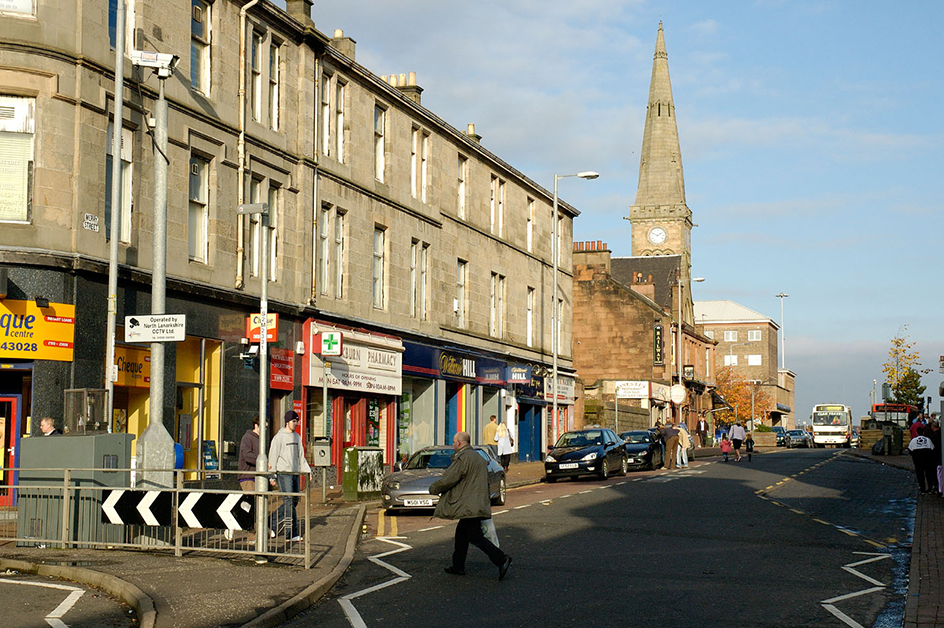North Lanarkshire (pop. 340,973) is a local government area in Scotland. It is a council area, the main unit of local government in Scotland. North Lanarkshire lies just to the east of Glasgow. The area headquarters are at Motherwell. Other important towns include Wishaw, Shotts, Kilsyth, Airdrie, and Coatbridge.
North Lanarkshire is a generally low-lying area, apart from the Kilsyth Hills in the north. The rivers North Calder Water, South Calder Water, Kelvin, Clyde, and Almond flow through the region. Some former industrial areas and wastelands have been transformed into natural habitats for wildlife. Drumbreck Marsh, for example, provides an important breeding ground for many birds, including lapwings, skylarks, and water rails.

In the mid-1800’s, the flax and weaving industries brought growth to the North Lanarkshire area. The arrival of the railroad in Motherwell in 1848 aided the growth of heavy industry, such as Colville’s ironworks and steelworks. Other industries that developed in the North Lanarkshire area included coal mining, iron smelting, cotton milling, and oil-shale processing. The new town (area of rapid growth) of Cumbernauld was developed as a residential area and as a center for high technology.
The area that is now North Lanarkshire was part of the county of Lanarkshire. In 1975, the county ceased to exist as an administrative region and became a part of the larger Strathclyde Region. In 1996, North Lanarkshire was created as part of the system of council areas, and the Strathclyde Region ceased to exist as an administrative region.
